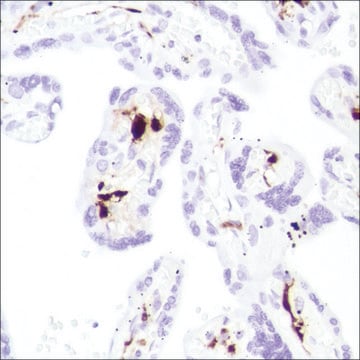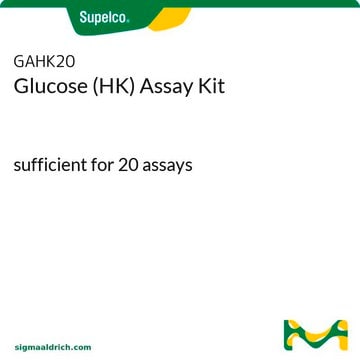MAK017
Lactose Assay Kit
sufficient for 100 colorimetric or fluorometric tests
Sign Into View Organizational & Contract Pricing
All Photos(2)
About This Item
UNSPSC Code:
12161503
NACRES:
NA.84
Recommended Products
usage
sufficient for 100 colorimetric or fluorometric tests
application(s)
cosmetics
food and beverages
detection method
colorimetric
fluorometric
relevant disease(s)
cancer; neonatal diseases; pediatric diseases
storage temp.
−20°C
General description
Lactose is a dissacharide formed by the condensation of one galactose and one glucose molecule. Lactose is the major sugar in the milk of most species, typically present between 2-8%. The enzyme lactase hydrolyzes lactose to its constituent monosaccharides. In neonates, glucose released via the action of lactase is a major energy source.
application
Lactose Assay Kit has been used to measure lactose content in milk.
Suitability
Suitable for the direct measurement of lactose levels in various biological samples (serum, plasma, other body fluids, food, growth media, etc.)
Principle
In this assay, lactose concentration is determined by an enzymatic assay, in which lactose is converted to galactose and glucose. The galactose is subsequently oxidized, resulting in a colorimetric (570 nm)/ fluorometric (λex = 535 nm/λem = 587 nm) product, proportional to the lactose initially present. This kit is suitable for use with various biological samples and has a linear range of detection between 0.2-1.0 nmole lactose for the fluorometric assay and 2-10 nmoles lactose for the colorimetric assay.
related product
replaced by
Product No.
Description
Pricing
signalword
Danger
hcodes
Hazard Classifications
Resp. Sens. 1 - Skin Sens. 1
Storage Class
10 - Combustible liquids
flash_point_f
188.6 °F - closed cup
flash_point_c
87 °C - closed cup
Certificates of Analysis (COA)
Search for Certificates of Analysis (COA) by entering the products Lot/Batch Number. Lot and Batch Numbers can be found on a product’s label following the words ‘Lot’ or ‘Batch’.
Already Own This Product?
Find documentation for the products that you have recently purchased in the Document Library.
Holly DeRosa et al.
eNeuro, 9(4) (2022-08-23)
Breastfeeding confers robust benefits to offspring development in terms of growth, immunity, and neurophysiology. Similarly, improving environmental complexity, i.e., environmental enrichment (EE), contributes developmental advantages to both humans and laboratory animal models. However, the impact of environmental context on maternal
Effect of high-fat diet on secreted milk transcriptome in midlactation mice.
Chen Y, et al.
Physiological Genomics, 49(12), 747-762 (2017)
Adrienne A Cheng et al.
American journal of physiology. Endocrinology and metabolism, 320(3), E438-E452 (2021-01-12)
Obesity is a prevailing problem across the globe. Women who are obese have difficulty initiating and sustaining lactation. However, the impact of genetics and diet on breastfeeding outcomes is understudied. Here we explore the effect of diet and genotype on
Y Chen et al.
Physiological genomics, 49(12), 747-762 (2017-11-03)
High-fat diet (HFD) during lactation alters milk composition and is associated with development of metabolic diseases in the offspring. We hypothesized that HFD affects milk microRNA (miRNA) and mRNA content, which potentially impact offspring development. Our objective was to determine
Yulie E Meneses et al.
Journal of dairy science, 99(5), 3396-3407 (2016-03-01)
Water scarcity is threatening food security and business growth in the United States. In the dairy sector, most of the water is used in cleaning applications; therefore, any attempt to support water conservation in these processes will have a considerable
Our team of scientists has experience in all areas of research including Life Science, Material Science, Chemical Synthesis, Chromatography, Analytical and many others.
Contact Technical Service






